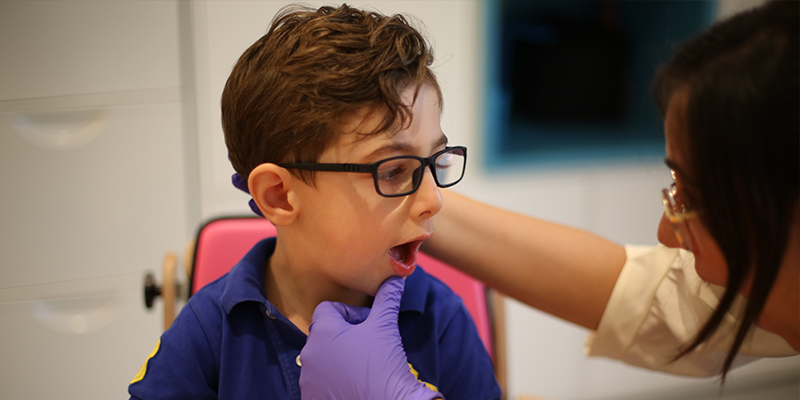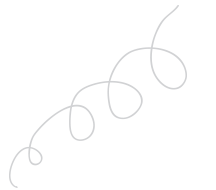
Becoming verbal requires abilities that we normally take for granted such as being able to volitionally control one’s voice, and to move one’s oral structures in a coordinated fashion. These are automatically learned by “typical” children very early in life. As they vocalize, they are naturally learning to produce voice. When they begin babbling, they are effectively fine-tuning their own sound production through repetitive play of opening and closing their mouth while making sounds. It is thanks to these jaw movements that lip and tongue mobility emerges, too. As these later-maturing articulators begin to fully participate in speech, jaw movements become more controlled, refined, and graded, allowing the production of even more complicated words, like “red”.
Babies begin to string sounds together to form early words like “mama”, “baba”, “papa”, or even “hu-ho!”, “up”, “no-no”, around the first birthday. At this point, typically developing children could virtually approximate any sound of their language, because their neuromuscular development allows them to do so. However, it is their linguistic system that will limit what they will be able to say. If the earlier-maturing speech movements are reduced, ineffective, or yet-to-be developed, children will remain non-verbal, or even non-vocal (meaning that they produce very little sounds at all), for a prolonged period compared to their peers even when they are matched by language and intelligence levels. This is the case for children with severe motor-speech disorders, like dysarthria, and young children with Childhood Apraxia of Speech (also known as Developmental Verbal Dyspraxia in the UK).
How does a child with Apraxia become verbal?
There are many ways to develop a child’s ability to produce voice, and to teach them to move their jaw up and down, on demand. The way we teach children with Apraxia to attempt their first vocalizations and their early speech targets depends on their clinical presentation and on the therapy setting. However, most of these children will need some sort of augmented sensory input and multi-sensory cues, often including touch, visual and verbal input, to make the biggest improvements in therapy. Your speech therapist will assess and get to know your child so that the most appropriate techniques can be applied. Here are some examples of tools and techniques that may be trialed:
- Alerting activities
- Activities to stimulate exhalation for speech
- Reflex stimulation
- Intensive interaction
- Modeling and reinforcing jaw movement with behavioral techniques
- Combining the other techniques with playing in front of the mirror
- Deep pressure/ vibration to stimulate voice production
- Laughing, giggling, singing, use of rhythm and whole-body movements
- Manually assisting the jaw movement, as in PROMPT therapy
- Assisting/ resisting the jaw movement with a spoon or another feeding tool
- Thermal stimulation
- Forms of Augmentative Alternative Communication (AAC)
- Interdisciplinary work with occupational and physical therapists
Please be aware that most techniques can be counterproductive if performed by an un-trained individual. Caution must be applied, especially if a malformation or damage to the temporal-mandibular joint is present. Some techniques may cause discomfort or damage to the oral structures if not properly executed due to structural deficits that need to be addressed first.
Can all children with Childhood Apraxia of Speech become verbal through therapy?
Yes, most children can at least learn to make sound, some will learn a few words, and many will be able to speak in sentences. However, there are some cases where children had severe social-communication issues, psychoses, and severe intellectual impairment, and their families decided not to undergo therapy to increase sound production. In such cases, it was believed that stimulating sound production might have contributed to a worsening of previous levels of functioning at home or in the community. For example, if the sounds were likely to remain loud, disruptive, highly unintelligible, not meaningful, or not directed towards a communication partner due to lack of communicative intent. Social appropriateness and prognosis should always be taken in consideration before starting anyone on this kind of therapy.
What are the first words of children with Apraxia?
Each child is different, and everyone follows a slightly different pathway to speech, so their first words may vary wildly! If a non-verbal child has been taught some early words thanks to facilitating big jaw excursions, it is likely that such words are characterized by the early vowel sound “ah”. You may start to recognize words like “mama”, “ha-ha”, “baba”, “dada”, or “up”. Later in therapy we usually hear new syllables and words, thanks to the emergence of more vowels like “ee” and “oo”, as in “eat” and “boo”, respectively.
For example, here is Lily’s story and how she began to speak at High Hopes:
The progress Lily has made in the last month has been incredible to watch and I can see, first hand, that it is entirely down to Ms Emanuela. I now feel that, with Ms Ema’s support, Lily has a chance at being able to speak in the future and we are so grateful to Ms Ema and to everyone at High Hopes for this gift.
– Lily’s mom –
Sources:
- Namasivayam, A. K., Huynh, A., Granata, F., Law, V. van Lieshout, P. (2020). PROMPT intervention for children with severe speech motor delay: a randomized control trial. Springer Nature
- Crosbie, S., Holm, A. & Dodd, B. (2005). Intervention for children with severe speech disorder: A comparison of two approaches.
- International Journal of Language and Communication Disorders, 40, 467 – 491
- Bowen, C. (2015) Children’s Speech Sound Disorders. London: Wiley-Blackwell
- Valvano J. Activity-focused motor interventions for children with neurological conditions. Phys Occup Ther Pediatr 2004; 24: 79–107.
- Hart T. Treatment definition in complex rehabilitation interventions. Neuropsychol Rehabil 2009; 19: 824–40
- Nuffield Centre Dyspraxia Programme 3 (NDP3), Therapy Manual, Chapter 4, Introduction to the Nuffield therapy approach and treatment Planning, p. 73
see also:





